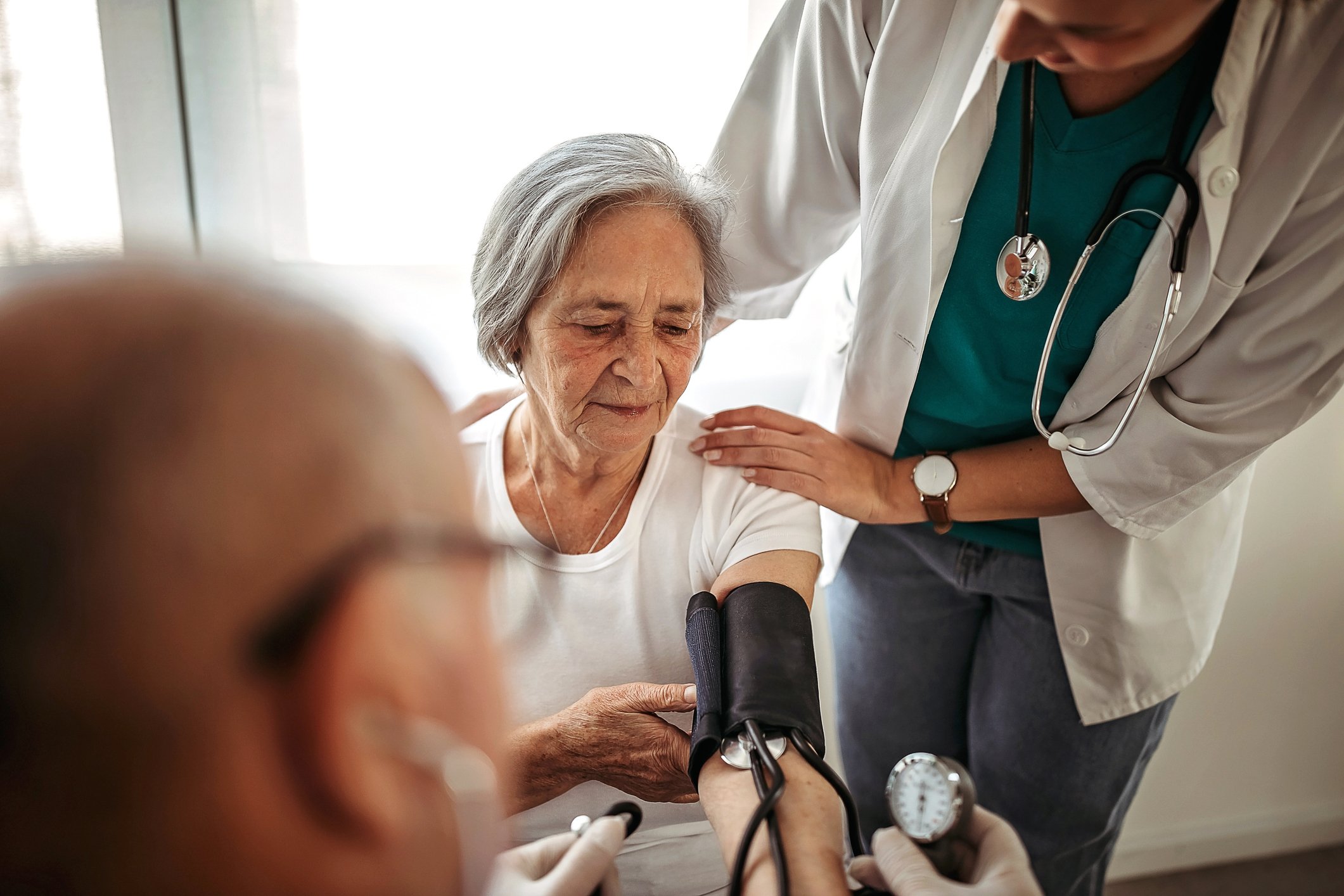Just a few years ago, metastatic melanoma was rapidly fatal – but today the disease responds frequently and long-term to new drug therapies. Experts reported on advances in melanoma therapy at the 25th EADV Congress in Vienna.
Prof. Martin Röcken, M.D., University Department of Dermatology, Tübingen, Germany, pointed out that there are three main issues when selecting treatment for patients with advanced or metastatic melanoma:
- How extensive is the tumor load?
- Is the mutation status known?
- What is the general condition?
A prerequisite for treatment with combination therapy consisting of two kinase inhibitors, which is recommended for high tumor load, is determination of mutational status with evidence of a mutation in the BRAF gene. The mutation causes uncontrolled tumor growth to be stimulated via the RAS/RAF/MEK/ERK pathway. Inhibition of tumor growth can be achieved if the signaling pathway is blocked, either by a selective BRAF inhibitor alone (vemurafenib, dabrafenib) or further down the pathway additionally by a selective inhibitor of the protein kinases MEK 1 and MEK 2 (cometinib in combination with vemurafenib, trametinib in combination with dabrafenib). Before the introduction of combination therapy, survival was improved by BRAF inhibitor monotherapy compared with classical dacarbazine therapy only in the first nine months, but not after nine months, the speaker reported. In contrast, combination therapy with a BRAF and a MEK inhibitor achieves survival of at least two years. For example, in a study involving 495 patients with advanced or metastatic melanoma and proven BRAF mutation, a median survival of 22.3 months was achieved with the combination of cometinib and vemurafenib [1]. In the comparator group treated with placebo and vemurafenib, median survival analyzed when 52% of all patients had died was significantly lower (17.4 months).
The kinase inhibitors are small-molecule drugs for daily oral administration. They produce a rapid tumor response with a high response rate. Compared to monotherapy, combination therapy with a BRAF and a MEK inhibitor increases response rates, prolongs overall survival, and reduces the incidence of specific side effects such as secondary skin tumors. Prof. Röcken pointed out that if treatment is interrupted, metastases can be expected to return rapidly. A recent publication reported 12 patients in whom BRAF/MEK inhibitors had achieved a complete response [2]. However, half of the successfully treated patients relapsed, a median of 6.6 months after stopping treatment. The authors write that the optimal treatment duration of patients with complete response without signs of progression is still unclear [2].
Combination immunotherapy
Only five years have passed since the kinase inhibitor vemurafenib and the immune checkpoint inhibitor ipilimumab became available and treatment of metastatic melanoma began to change completely, said Prof. Caroline Robert, M.D., Institut de Cancérologie Gustave Roussy, Villejuif, France. In 2011, the speaker published a study in which immunotherapy with the anti-CTLA4 antibody ipilimumab in combination with dacarbazine achieved a significant improvement in 3-year survival compared with dacarbazine monotherapy [3]. Even more impressive results were achieved by the anti-PD1 antibodies pembrolizumab and nivolumab, which were developed in a short time and quickly received approval. Two phase 3 trials published by the speaker compared nivolumab with conventional dacarbazine chemotherapy [4] and pembrolizumab with ipilimumab [5]. In the nivolumab group, 70% of patients were still alive 18 months after starting therapy. Compared with the dacarbazine group, overall survival improved by approximately 50% [4]. In a direct comparison with ipilimumab, the anti-PD1 antibody pembrolizumab achieved significantly higher overall survival at 18 months [5]. Combination therapy of nivolumab plus ipilimumab resulted in a median progression-free survival of 11.5 months 2.9 months with ipilimumab and 6.9 months with nivolumab monotherapy) and an objective response rate of 58% (with ipilimumab 19% and with nivolumab 44%, respectively) [6]. Recently, study results on 2-year overall survival achieved with the combination therapy nivolumab plus ipilimumab were published [7]. It was 63.8% with combination therapy and 63.8% with ipilimumab monotherapy.
53,6%.
The other side of the coin
The response rate is high with combination immunotherapy, but toxicity, which is also high, forms the other side of the coin, the speaker reported. Most often, the side effects are an undesirable consequence of the mechanism of action of immune checkpoint inhibitors, which trigger stimulation of the immune system. Immunological side effects include, for example:
- Skin side effects such as pruritus, rash, vitiligo
- Gastrointestinal side effects such as nausea, diarrhea, colitis
- Hepatitis, nephritis
- Endocrinopathies such as hypo- or hyperthyroidism, hypophysitis, diabetes mellitus type 1
A recently published prospective observational study (67 patients with metastatic melanoma treated with pembrolizumab) concluded that vitiligo occurring during pembrolizumab therapy may be a favorable sign, the speaker reported. Vitiligo developed as an immunologic side effect in 17 patients (25%) [8]. In these patients, objective (complete or partial) response of melanoma occurred more frequently (12 of 17 patients [71%]) than in patients without vitiligo development (14 of 50 patients [28%]).
Source: 25th EADV Congress 28 September-2 October, Vienna
- Spotlights 1: New developments in melanoma therapy – update. Speaker: Martin Röcken, Tübingen. 29.9.2016
- Plenary lectures B: The advancing field of melanoma immunotherapy. Speaker: Caroline Robert, Villejuif. 30.9.2016
Literature:
- Ascierto PA, et al: Cometinib combined with vemurafenib in advanced BRAFV600-mutant melanoma (coBRIM): updated efficacy results from a randomised, double-blind, phase 3 trial. Lancet Oncology 2016; 17: 1248-1260.
- Carlino MS, et al: Cessation of targeted therapy after a complete response in BRAF-mutant advanced melanoma: a case series. Br J Cancer 2016, October 6 (Epub ahead of print).
- Robert C, et al: Ipilimumab plus dacarbazine for previously untreated metastatic melanoma. N Engl J Med 2011; 364: 2517-2526.
- Robert C, et al: Nivolumab in previously untreated melanoma without BRAF mutation. N Engl J Med 2015; 372: 320-330.
- Robert C, et al. : Pembrolizumab versus ipilimumab in advanced melanoma. N Engl J Med 2015; 372: 2521-2532.
- Larkin J, et al: Combined nivolumab and ipilimumab or monotherapy in untreated melanoma. N Engl J Med 2015; 373: 23-34.
- Hodi FS, et al: Combined nivolumab and ipilimumab versus ipilimumab alone in patients with advanced melanoma: 2-year overall survival outcomes in a multicentre, randomised, controlled, phase 2 trial. Lancet Oncology 2016; September 8 (Epub ahead of print).
- Hua C, et al: Association of vitiligo with tumor response in patients with metastatic melanoma treated with pembrolizumab. JAMA Dermatol 2016; 152: 45-51.
DERMATOLOGIE PRAXIS 2016; 26(6): 44-45












